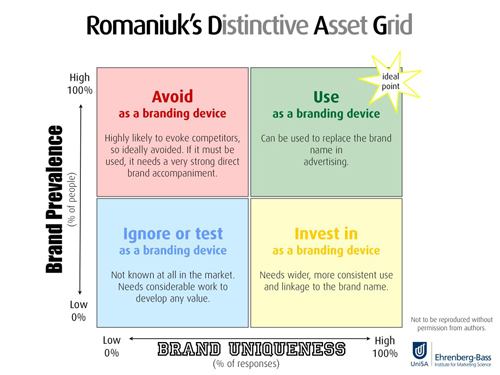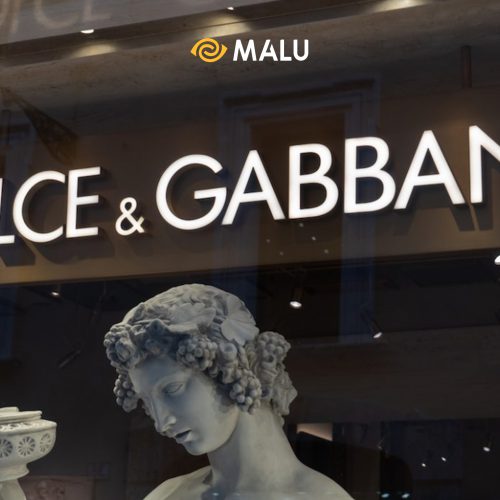
We always want our brand to be unique and stand out from a jungle of rival brands. But the truth is often painful, very few brands on the market can be considered “unique”. The key thing here is: How to create a brand identity that sets it apart from dozens of competitors out there?
So, what are their characteristics? The following article will help you build a distinctive brand, as well as ways to protect the most valuable asset for this business.
>>> Brand Strategy – Philip Kotler’s Brand Basics
Mục lục bài viết
ToggleWhat constitutes a brand identity?
Brand “identity” is not just about the unique features of your product or service, but it is also the ingredients that make your brand stand out and different. Differentiating attributes give brands valuable value: They help businesses measure how well customers perceive the uniqueness and popularity of the brand. The higher the popularity and uniqueness of the brand, the greater the awareness and loyalty from the gods.
>>> Why brands need customer positioning strategy
Awareness + Loyalty = Profit. This is the unwritten formula that any brand maker knows by heart.
To maintain and develop the identity in the brand, the important point here is to keep the consistency of the core brand values, including: logo, color, slogan, tagline, avatar, and advertising style.
>>> Why Brand Need Tagline, Slogan, Mission And Vision
For example, there are countless brands trumpeting each other in the global market, but consumers still only remember the core brand values, like the familiar red and white color of Coca-Cola, or the logo ” McDonald’s legendary golden gate. Over the years, these giants often make adjustments and changes to suit the current cultural characteristics, but the core brand value remains the same as when the business was first established.
 Another good example of brand differentiation is the sportswear label Nike, with the tagline “Just Do It”. The Swoosh, Nike’s logo symbol, is so famous that it can be completely separate from the business name, and customers still recognize the brand.
Another good example of brand differentiation is the sportswear label Nike, with the tagline “Just Do It”. The Swoosh, Nike’s logo symbol, is so famous that it can be completely separate from the business name, and customers still recognize the brand.
These brands have proven, if they continue to keep their unique identity, how long their product life cycle will be.
 Are you wondering about building a distinctive brand? The Ehrenberg-Bass Institute of Marketing Science offers four essential tips to create a distinct identity for your brand :
Are you wondering about building a distinctive brand? The Ehrenberg-Bass Institute of Marketing Science offers four essential tips to create a distinct identity for your brand :
- When changing and updating the brand identity, it is necessary to retain the core values of the brand.
- The change is only made when the business wants to improve the level of customer sympathy for them.
- When a promotional strategy and new product features need to be promoted, a rebrand is necessary.
- A change should be made when you intend to revive an aging brand.
>>> Choose the right color for the brand
How to recognize your brand identity?
Recognizing and measuring brand identity helps businesses know where that product or service is similar to other competitors. Imagine: If Coca-Cola focused too much on advertising the delicious taste of Cola, would they be advertising for nothing for their arch-rival Pepsi?
What makes businesses work so hard to find it is: Recognizing the difference in their brand, when there is too much content to create to serve the media channels. and different target audience. Don’t worry, Jenni Romaniuk from Ehrenberg-Bass Institute, with Romaniuk’s brand identity matrix (Romaniuk’s Distinctive Asset Grid), will make it easier for you to identify your brand identity.
 The two core criteria in this matrix are “attention, popularity” and “uniqueness”. Marketers can control ‘popularity’ by increasing or decreasing the frequency of marketing the product’s distinctive information on the packaging or in the media. But in contrast, “uniqueness” is something more difficult to control and measure.
The two core criteria in this matrix are “attention, popularity” and “uniqueness”. Marketers can control ‘popularity’ by increasing or decreasing the frequency of marketing the product’s distinctive information on the packaging or in the media. But in contrast, “uniqueness” is something more difficult to control and measure.
In short, to enhance brand identity, you need to combine both criteria: “universal” and “unique” in the brand and related media campaigns.
Manage your brand identity
Building a brand identity is not something that can be achieved overnight, it requires a lot of time and effort to pull customers closer to you. Once a brand identity has been established, you need to manage and protect it, by:
- Learn how to organize, and manage, assets related to brand differentiation.
- Know the difference between files assets (raw data relevant to brand marketing campaigns) and brand assets. Identify the differences, and have the right management practices for them.
- Focus on customer feedback on what differentiates your brand, not what the marketing team responds to.
- Use your brand identity consistently in each specific marketing campaign.
- Similar to the printing of distinctive brand information on product packaging, maintaining consistency.
- Make sure your brand’s uniqueness doesn’t overlap with your competitors’.
- When setting up new elements for your brand, make sure it is aligned and consistent with your brand name (Example: Changing the brand name of the restaurant chain IHOP to IHOb).
In short, the management and organization of brand assets, in order to create a brand identity, plays an extremely important role to link customers with businesses. Having a solid management tool, businesses can completely focus on building a strong brand.

![[Case Study] – Nike's Branding Strategy 5 chien luoc xay dung thuong hieu cua nike](https://maludesign.vn/wp-content/uploads/2021/03/chien-luoc-xay-dung-thuong-hieu-cua-nike-500x500.jpg)


